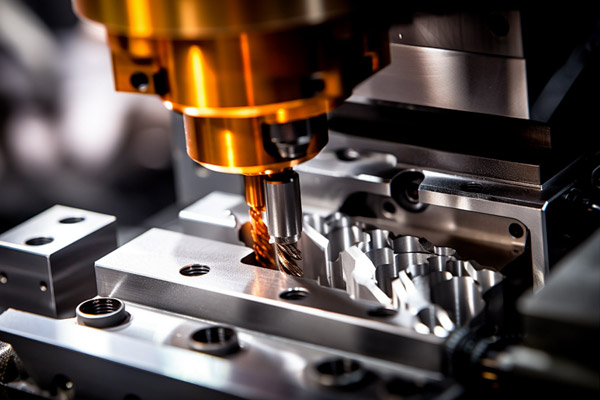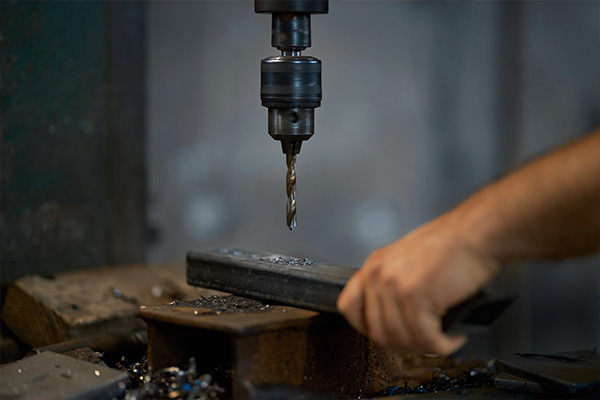Welcome to My Blog! 🌟
Before we dive into the content, I’d love for you to join me on my social media platforms. It’s where I share more insights, engage with our vibrant community, and post regular updates. Here’s how you can stay connected:
📘 Facebook: Connect with me on Facebook
Now, let’s embark on this journey together. I hope you find the content here insightful, engaging, and most importantly, valuable. Let’s explore, learn, and grow together! 🚀
Table of Contents
Introduction

The materials chosen for construction and industrial applications play a pivotal role in the overall success and efficiency of any project. Over the years, advancements in material science have led to the development of new and improved options, offering superior performance compared to traditional choices. One such material that has gained significant traction is the 4×4 steel sheet. Known for its durability, strength, and versatility, this material is increasingly being used across multiple industries. In this article, we will compare 4×4 steel sheet to traditional materials like wood, aluminum, and concrete, focusing on their respective strengths and weaknesses. This comparison will allow you to make a more informed decision for your 2025 projects.
The Advantages of 4×4 Steel Sheet
The 4×4 steel sheet has become a preferred choice in numerous applications because of its numerous advantages over older, traditional materials. Its use is particularly widespread in construction, manufacturing, and automotive sectors. Here’s why this material stands out:
- Increased Durability and Strength: Steel is inherently a strong and long-lasting material, and the 4×4 steel sheet is no exception. Unlike wood, which can rot or degrade over time, or aluminum, which can corrode in certain environments, steel offers exceptional resistance to wear and environmental stressors.
- Cost-Effectiveness in the Long Run: One of the primary reasons for the increasing use of 4×4 steel sheet is its low maintenance requirements. Compared to materials like wood or concrete, which may need frequent repairs or replacements, steel sheets require minimal upkeep, saving time and money in the long term.
- Superior Structural Integrity: While steel is known for its weight, the 4×4 steel sheet provides an ideal balance between strength and weight. Its high tensile strength allows for the construction of strong structures while minimizing the material used. This characteristic makes it an ideal candidate for large-scale industrial applications where load-bearing capacity is crucial.
- Customization and Versatility: Unlike materials that require continuous harvesting or extraction, steel sheets, especially the 4×4 steel sheet, are 100% recyclable. This contributes to sustainable construction practices, as the material can be reused at the end of its lifecycle, reducing waste and the need for new raw materials.
How 4×4 Steel Sheet Compares to Traditional Materials
To make a more informed decision about which material to choose, it’s important to compare the 4×4 steel sheet against traditional options like wood, aluminum, and concrete. Below is a comprehensive comparison based on key properties:
| Property | 4×4 Steel Sheet | Wood | Aluminum | Concrete |
|---|---|---|---|---|
| Strength | High | Medium | Medium | High |
| Durability | High | Low to Medium | Medium | High |
| Corrosion Resistance | Excellent | Low | Good | Low |
| Cost | Medium | Low | High | Medium |
| Weight | Medium to High | Low | Low to Medium | High |
| Maintenance | Low | High | Medium | Low |
| Versatility | High | Medium | High | Low |
| Environmental Impact | Medium | Low | Medium | High |
As shown in the table, 4×4 steel sheet excels in strength, durability, and corrosion resistance compared to traditional materials. However, it is heavier than wood or aluminum, which may require additional considerations in transportation or installation.
Environmental Impact of 4×4 Steel Sheet vs. Traditional Materials

In today’s construction and manufacturing sectors, the environmental implications of material selection are under increasing scrutiny. With sustainability now a central focus across global industries, the choice between modern metal sheets and conventional building components becomes even more critical.
Steel panels, especially those cut into 4×4 dimensions, occupy a middle ground when assessing ecological impact. While the smelting and processing of metal involves considerable energy use, one of the material’s most significant advantages lies in its recyclability. After completing its service life, this alloy-based product can be melted down and reused in new forms, greatly reducing waste and conserving raw resources. This cyclical nature makes it a more environmentally responsible alternative to some heavy-duty options.
Concrete, by comparison, has one of the highest carbon footprints among construction resources. Its production relies heavily on cement, a substance whose manufacturing process emits substantial greenhouse gases. Despite concrete’s strength and fire resistance, its inability to be reused in the same form makes it less attractive from a sustainability perspective.
On the other hand, timber—if harvested from certified, well-managed forests—can serve as a low-impact option due to its renewability. However, its limited resistance to pests, moisture, and weather degradation often leads to more frequent replacement cycles. These recurring needs can reduce its initial environmental advantages when viewed through a long-term lens.
By offering greater longevity and full recyclability, steel-based sheets—especially those sized for standardized applications—help minimize replacement frequency and contribute to sustainable construction goals. Though not completely carbon neutral, their ability to re-enter the production stream places them ahead of less reusable counterparts.
The Cost of 4×4 Steel Sheet vs. Traditional Materials

Affordability remains a vital factor in choosing construction materials, especially for developers managing long-term budgets. Initially, metal sheets may appear costlier than wood or other traditional materials. However, evaluating price without considering lifespan and upkeep can lead to misleading conclusions.
Metal panels, particularly those sized for standard fabrication, tend to demand higher upfront investment. This is primarily due to the complex processing methods required to achieve high strength and precision dimensions. Yet, the story doesn’t end with purchase price. These materials often last significantly longer than alternatives, making them more economical over time. In industrial environments or high-demand applications, their resistance to corrosion, deformation, and structural fatigue reduces the need for frequent replacements or ongoing maintenance.
Timber, by contrast, offers a much lower entry cost. It is lightweight, easy to work with, and widely available. However, wood’s vulnerability to warping, rot, and termite damage means it may incur higher lifecycle costs. Regular treatment, repair, and eventual replacement can accumulate substantial expenses over the years.
Aluminum is another contender that boasts affordability and corrosion resistance. However, its relatively low tensile strength compared to steel may limit its use in heavy-duty contexts. While lighter and easier to install, it may require reinforcement or supplementary materials, adding to total project costs.
Concrete remains a popular option for its compressive strength and fire resistance. Yet, the material’s bulkiness and installation complexities often increase logistical costs, especially for remote or difficult-to-access sites. Transporting and placing concrete can be labor-intensive and equipment-heavy, leading to escalated budgets.
Ultimately, selecting high-grade steel sheets for structural or protective purposes may appear expensive at first glance, but when project longevity and maintenance are factored in, they often emerge as the smarter financial decision. For forward-looking projects planned in 2025 and beyond, investing in more durable and lower-maintenance materials can result in significant savings across the building’s lifespan.
Conclusion
As we move into 2025, the use of 4×4 steel sheet continues to offer significant advantages over traditional materials in terms of durability, strength, and cost-effectiveness. While it may not be the best option for every project, it is an excellent choice for industries that require robust, long-lasting materials. Whether you’re working in construction, manufacturing, or transportation, the 4×4 steel sheet stands out as a material that can handle the demands of modern industry.
For projects that prioritize environmental sustainability, low maintenance, and long-term savings, 4×4 steel sheet is likely to remain a top contender.
FAQ
Is 4×4 steel sheet more expensive than traditional materials?
Yes, the initial cost of 4×4 steel sheet is higher than materials like wood or aluminum, but its long-term durability and low maintenance costs make it a more cost-effective choice in the long run.
Can 4×4 steel sheet be used in all construction projects?
4×4 steel sheet is highly versatile and can be used in a wide range of applications, but its heavy weight may require special handling in some projects. It’s best suited for industries where durability and strength are critical.
How does 4×4 steel sheet compare to concrete in terms of durability?
Both 4×4 steel sheet and concrete are highly durable, but 4×4 steel sheet offers superior resistance to corrosion and wear in many environments. Concrete, however, may still be preferred in specific structural applications due to its mass.
Is 4×4 steel sheet eco-friendly?
Yes, 4×4 steel sheet is recyclable, making it a more eco-friendly option compared to concrete. Its durability also reduces the need for frequent replacements, contributing to its sustainability.
Can 4×4 steel sheet be used in outdoor applications?
Yes, 4×4 steel sheet is highly resistant to environmental factors such as moisture, heat, and corrosion, making it ideal for outdoor and industrial applications.

